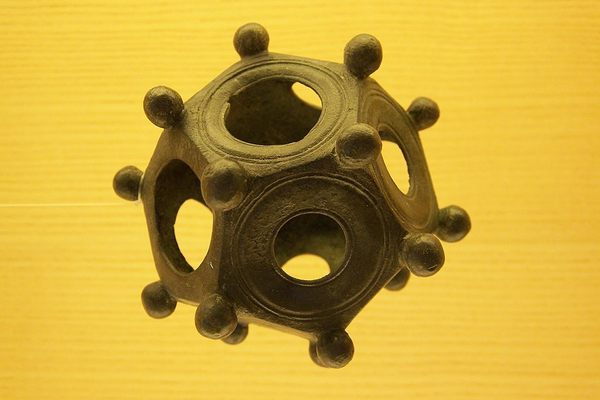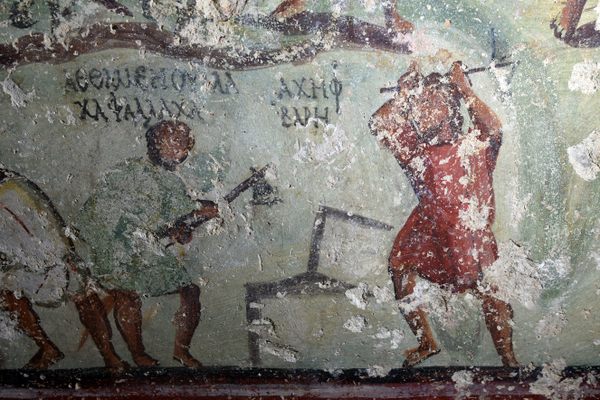When Garbage Collection Stops, Your City Might Be in Trouble
A Byzantine trash heap reveals the slow decline of a desert culture.

For archaeologists there are a few things that indicate an ancient settlement was approaching its end. There can be signs of conflict, or documents describing political upheaval, or evidence of a great fire. In the Byzantine city of Elusa in Israel’s Negev Desert, there was one of these signs of impending doom. They stopped picking up their garbage.
While surveying the partially excavated city of Elusa, a team of researchers from the University of Haifa came to realize the mound they had been standing on for a better view was the remains of an ancient trash heap. Beneath their feet were sherds of Byzantine pottery, olive pits, and animal bones. After a few rounds of picking for artifacts, the team turned to carbon dating to see what story the finds told. They discovered that the dump had stopped receiving garbage almost 100 years before the city’s ultimate collapse in the 7th century, according to the study they published in Proceedings of the National Academy of Sciences. Once the Byzantine empire’s wine center, Elusa was well on its way down the drain before the rise of Islam in the region, widely seen as the reason for its ultimate decline as a population center.
Lead author of the study, Guy Bar-Oz, of the University of Haifa told LiveScience that during Elusa’s decline the rest of the Roman Empire was thriving and expanding. But not Elusa. Garbage collection and disposal was an organized public work in the city and it would have been uncharacteristic to have it end spontaneously. The apparent abrupt stoppage during the mid-6th century also coincides with another well-known, dramatic shift in the world, known as the Late Antique Little Ice Age.

At that time, three major volcanoes erupted—in 536, 540, and 547—bringing on more than a century of climatic disruption. The Northern Hemisphere experienced significantly colder temperatures that prompted waves of migration from the Asian steppe and Arabian Peninsula. Famine and disease spread; it’s even believed that the weather shift and attendant mass movement of people helped fuel the Justinian Plague, which killed more than 100 million by the end of 590.
The study doesn’t make a clear correlation between the fall of Elusa and the climate downturn, but it is at least suggestive. There may, however, have been other factors. For example, other settlements in the Negev Desert persisted far longer than Elusa. Maybe another foray into that ancient dump will dig up more answers.











Follow us on Twitter to get the latest on the world's hidden wonders.
Like us on Facebook to get the latest on the world's hidden wonders.
Follow us on Twitter Like us on Facebook